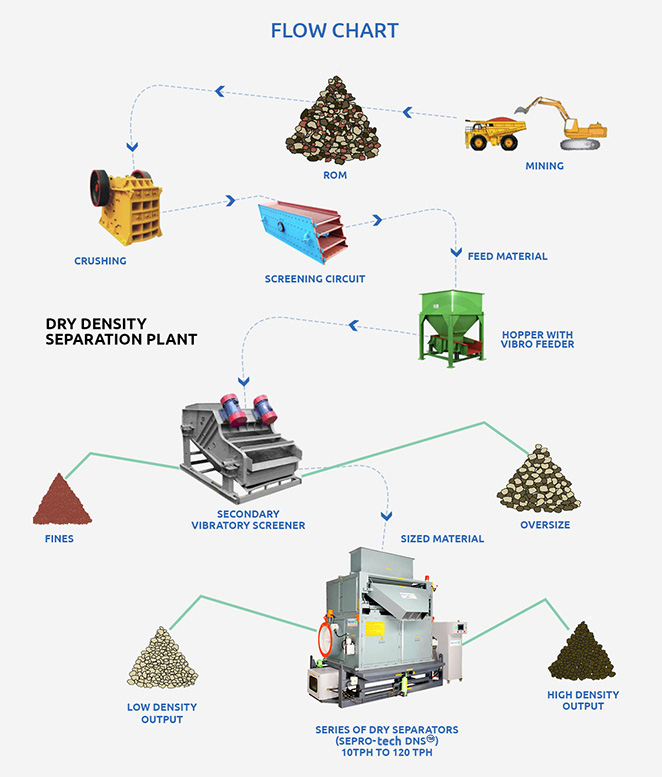Automation
Achieving optimal separation is an art, and Sepro-tech DDS masters it through precise automation. Our technology adjusts four critical parameters with ease, responding to factors like Relative Density, Mineralogy, Liberation, feed size, and LD/HD Yield
- Air Pressure
- Air Volume
- Deck Inclination
- VIV Degree
- Deck Vibration
These parameters are fine-tuned either manually or automatically, ensuring a tailored approach to every separation process. The key to this efficiency lies in our Human-Machine Interface (HMI) paired with a PLC-based controller. This combination guarantees not only accuracy but also enhanced efficiency, enabling sensitive performance adjustments.
Safety and reliability are paramount, and our control panel reflects that commitment. Equipped with advanced electrical protections, It safeguards drives, sounds alarms when necessary, and facilitates preventive Maintenance and diagnostic systems.
Furthermore, our equipment goes the extra mile with features such as an Automatic Lubrication System, Vibration Analyzer, and Bearing Condition Monitor. Together, these elements ensure seamless operation and optimal performance, making Sepro-tech DDS the pinnacle of automated separation technology.”
The VTD (Velocity to Density Converter) Sensor Device is an essential component & Heart of the Sepro-tech DDS.
Basic Working Principle VTD: The terminal velocity of the air at the suction end of the Impeller is directly correlated with the density of the material being processed.
The VTD performs a crucial function by detecting this terminal velocity and converting it into an electrical signal. This electrical signal Is pre-calibrated to match the density of a specific material. Subsequently, the signal undergoes processing with the assistance of a PLC (Programmable Logic Controller) for further operational stages.
The PLC continuously compares the received signals with the cut-off point specified by the user or operator. This comparison results in a two-point PID (Proportional-Integral-Derivative) control system
- Modulation of Impeller : One aspect of the control system is responsible for modulating the impeller's operation.
- Modulation of VIV Damper : The other aspect of the control system regulates the modulation of the VIV (Variable-Inlet Vane) Damper.
These modulations are implemented within a closed-loop PID control system, precisely fine- tuning to the cut-off point to achieve accurate and efficient separation of materials.



 Equipment
Equipment

